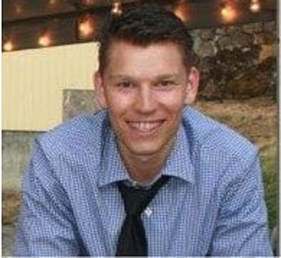|
If you have been following the “Paleolithic” or ancestrally informed movement over the past few years, following health educators, anthropologists and “evolved” clinicians you have probably stumbled across the idea that we can be restored to health and maintain our wellness by following a lifestyle akin to our ancestral heritage. If you haven’t, that’s okay, (I don’t pay attention to the news or watch TV anymore so I can’t tell you much about most public events). The ancestral “argument” as I will call it, is essentially what I have just described in the first paragraph: Live a lifestyle (involving nutrition, movement, sleep, social interaction, and spiritual connection) in a manner similar to our hunter gatherer ancestors and more specifically to the cultures and communities from which you derive the majority of your genetic influence. Now the myopic counter argument that often gets pushed and does not need to be addressed involves the concept that our ancestors died young and didn’t have time to develop chronic diseases, their life expectancy was much shorter than current averages, why should we follow that kind of lifestyle and die at age 25? Like I said, I’m not here to argue that point. There are plenty of people and colleagues who have addressed this thoroughly http://darwinian-medicine.com/what-can-we-learn-about-health-from-studying-hunter-gatherers/ http://wholehealthsource.blogspot.com/2008/08/kitavans-wisdom-from-pacific-islands.html The argument: We should emulate the lifestyle patterns of our ancestors and minimize our use and exposure to modern chemicals/technologies associated with chronic disease states because we were/have not evolved to live in our current world far removed from the “natural” environments and foods we evolved over thousands of years to optimally inhabit and consume. The statement incorporates support from numerous hunter gatherer studies revealing near absence of disease in such populations and draws on our understanding, popularized by Darwin, of evolution as a gradual process of genetic inheritance requiring multiple generations to manifest any meaningful “change” or effect. What this argument is essentially trying to say is that our “genes” have not “caught up” to our currently advancing and technologically driven world and we are “mismatched” to our current state of living. I completely agree with evolutionary theory and this idea of “mismatch,” however, there are perhaps some subtle nuances to this argument as it is presented that we should clarify and refine in order to avoid making illogical statements or inferring unsupported conclusions. In the remainder of this post, I will seek to point out and address some potential problems with this argument as it is presented, recognizing that perhaps the problems I bring up are rather nuanced or “nit picky” things that do not necessarily need to be clarified. BUT, in an effort to remain as open and objective as possible I have felt compelled to research and discuss a few topics knowing there are indeed seeds in need of planting in order to stimulate progressive and creative thought. Shall we begin? 1. Evolution is a random, gradual but variable process with no “goal,” “direction” or endpoint. Evolution at its most basic description is the study of the inheritance of random and variable genetic mutations over time in a specific population (key: inherited and variations). We know by examining the genetic code that during the normal replication process of the millions of nucleotide pairs in our DNA, occasionally the replication, oversight and repair machinery “mess up,” and in the process of making a new copy of DNA within a dividing cell, one of the letters in the DNA code changes. Current best estimates in humans put this mutation rate at 1 mutation in every 30 million base pairs (6). Seems innocuous right? 1 in 30 million? Thinking back to the scale of DNA replication, these “mistakes” happen by random chance every second of every day creating a mixing pot of cells with ever so slightly different genetic codes. This process of accumulating random mutations in the genetic code is no different than it was thousands of years ago with our ancestors. Or is it? While the total amount of genetic material in our DNA is essentially unchanged and the machinery- enzymes responsible for replication and repair are remarkably unchanged, what can be said about this newly estimated intrinsic mutation rate? While I am no geneticist, my understanding after a somewhat lengthy review of the literature is that this intrinsic mutation rate is subject to change as a result of the selective pressures put upon the organism in question. As these researchers describe in their theoretical hypothesis, “Stable environments would favor low mutation rates (anti-mutator genotypes), constrained only by the costs of error-repair mechanisms. In contrast to this, environments subjected to frequent changes would select for increased mutation rates (mutator genotypes) that permit faster adaptation to the new conditions.” (1). Essentially their argument is that organisms in rapidly changing environments would and do benefit from increased genetic mutation rates as this increases the likelihood of acquiring beneficial mutations supporting better reproductive fitness. Organisms in rather stable environments, however, would benefit from decreasing this intrinsic mutation rate (also called replication fidelity) to as near the error repair rate (capacity to repair DNA) as possible. Many other papers have discussed similar concepts of hypermutation and hypomutation in relation to the overall amount of selective pressure put upon a certain gene loci and organism (2,3). Antibiotic resistant bacteria anyone? (4). Now we must acknowledge that these theories and studies have primarily focused on prokaryotes like bacteria and not on eukaryotic organisms like humans, but it does make you start to wonder what is happening to the intrinsic human genetic mutation rate in the face of new stressors such as modern food, lighting, and global, hyper connected social environments? Are current pressure increasing mutation rates such as to promote more rapid adaptation and eventual evolution through genetic inheritance of the beneficial mutations? Curious questions indeed. Bringing this back now to the original point, we see that evolution is still a gradual process, but perhaps variable depending on the selective pressures put upon the organism. And most importantly, evolution as a process has no GOAL! The concepts of de-evolving and being more evolved don’t really make sense when you see there is no real purpose or directionality to evolution. Mutations can be beneficial, deleterious or purely inconsequential, and they can be inherited without any intervening process of biased selection. Where we can actually begin to “observe” directionality as it relates to evolution is when we study the impact of environmental pressures to create SELECTION. Having possibly created more confusion than clarity after this initial foray into evolutionary biology, let’s move on to talk a little more about this process of NATURAL SELECTION. 2. Natural Selection, as we understand it, is CHANGING! Darwin often gets quoted as being the father of evolution, but the truth is, he didn’t invent or discover evolution. What Darwin actually theorized was a mechanism by which evolution is carried out (and in his case observed): This process? NATURAL SELECTION. Reiterating for the sake of clarity from our original description of evolution and evolutionary mismatch: evolution is simply the CHANGE of inheritable or genetic characteristics in a population over time. It says nothing again about how these changes may appear, disappear or be preserved- no directionality. So by saying something akin to: “We were not evolved for this type of environment” distorts the true intention behind the evolutionary mismatch theory, for we were never evolved FOR anything. Reiterating again (perhaps to be annoying) evolution has no purpose and is not a static process. Not wanting to get too abstract, but desiring to introduce an interesting thought, I offer the fodder, “Who is to say we are not “supposed to” adapt cognitively to an environment with cell phones, computers and digital social media?” Getting a little spiritual, if you believe in a greater being or God, one perhaps with a distinct plan for humanity, maybe you believe that He or She “planned” for humans to create such technological inventions and adapt to a lifestyle with such digital underpinnings. Now, this post is not meant to introduce arguments that cannot be either proved or disproved, I simply offer some additional thoughts for discussion to hopefully allow all of us to ponder or reframe our word choice when we say things like, “Humans were never meant to live completely indoors, never meant to spend hours typing on a computer or never meant to be engaged in hundreds of digital friendships.” Coming back once again to our lovely theory of evolution by natural selection, let’s examine what this theory actually proposes. The theory of natural selection implies that certain genes will be passed on within populations based on the FITNESS (the reproductive and survival capacity) of an organism. Basically, the genes of the organisms best able to survive and reproduce will be selected for over the organisms that can’t reproduce as well or die before being able to have offspring. For the biologists in the group, you will likely know that Darwin’s theory of natural selection was drawn quite significantly from his time in the beautiful equatorial Galapagos Islands. What is much less well known is that a pair of modern scientists (a husband and wife pair by the name of Peter and Rosemary Grant) documented and observed evolution by natural selection and the creation of an entirely new species over a portion of a single lifetime as part of their research on “Darwin’s Finches” in the Galapagos (5). I thought you said evolution was gradual? Yes it is. But natural selection (as documented by Rosemary and Peter Grant) can be quite rapid and adaptation nearly instantaneous. Applying some of our modern understanding of genes and gene theory, perhaps we can even start to ask: “What are the implications of applying modern genomics to the ground breaking research by Rosemary and Peter Grant? Two words Nearly unfathomable. As you will see in the article cited above, scientists in connection with the Grants are already beginning to explore the genetic underpinnings behind the Grant’s documentation of phenotypic variation and distinct speciation events amongst numerous finches in the Galapagos. Put another way We are beginning to identify the specific genes (and changes in gene expression) behind the observed changes in physical appearance (phenotype). Purely mind-blowing if you ask me! Now to just add another ripple into this story, when we think about natural selection in modern humans, I bet you are already thinking: I don’t see many people having much trouble reproducing. How can we actually select for the “optimal” genes if modern medicine and other changes in our environment allow individuals with relatively poor health to reproduce and pass on their genes? Yes, great question. I once again don’t have a robust or concrete answer, but perhaps I can propose some interesting suggestions to this curious question. I have argued so far in this article that overall, current selective pressures are much different than they were tens of thousands of years ago and overall likely more diverse and intense, however, humans have many mechanisms of adaptation besides direct genetic inheritance or evolution by natural selection. Epigenetics and the microbiome anyone? Rather than relying on genetic inheritance (our parents) as a way of improving our overall fitness, perhaps we are currently relying on more easily malleable “patterns” of expression (epigenetics) and the variability of the vast microbiome as the primary means to more rapidly adapt, thrive and flourish. With some scientists argue that we are more bacteria than we are ourselves (when you look at total cells and genetic diversity), perhaps the ideas presented at the beginning of this article surrounding increasing mutation rates in prokaryotic organisms (bacteria) as a result of increased stress/demands/selective pressures just got much more relevant. Perhaps it doesn’t really matter how fast we can evolve by natural selection, it only really matters how quickly we can adapt new patterns of gene expression or construct symbiotic relationships with colonies of more rapidly mutating organisms capable of adaptation at an even more accelerated rate? Okay, mind-blowing time is over, let’s wrap up! Where exactly does this leave us?
Are we simply slowly evolving, poorly adapted organisms doomed to chronic illness because our genes are mismatched for our current environment? Or Has the process of natural selection allowed us to become MORE resilient with the increasing complexity of our brain compared to other mammals? One must not forget that at one point in time a spear made out of sharpened stone was a technological advancement that helped propel the Homo species closer to the top of the food chain. The creation of stone tools, as primitive as it may seem, allowed us to reshape our entire surrounding environment to our needs. Fires could be started faster, sleeping structures could be made sturdier, and weapons could be assembled to fight not only more animals, but larger ones as well (allowing for improved nutrition). In our current modern society, we have created impressive technological advancements that have led to a nearly endless food supply that largely does not spoil allowing us to no longer “worry” about starvation (yes, we recognize that there are communities where people are actually starving, however, that discussion is for a post far beyond the scope of this one). On the surface, it is quite remarkable to think what we have accomplished in creating this surplus of material wealth. An abundance of food, stores of readily accessible materials to build safe structures that keep us away from prey and harsh climates, and medical advancements to combat infections all come together to create the perfect conditions for humans to complete the one essential task for any organism,: to reproduce and thus transfer one’s set of genes to the next generation. Perhaps our current troubles are not so much the direct consequence of the technology we have created, but our overall lack of responsibility in using such technologies. Or put another way, our abuse and disregard for the complex interactions of such technologies with the greater natural environment is what is contributing to our most pressing problems and overall suffering. And just to add another layer of complexity, perhaps one’s ability to properly utilize technology seamlessly within our complex natural world is a selective pressure, a form of natural selection currently being carried out on millions and billions of Homo sapiens. Put in no simpler terms: We have gone from one end of the spectrum of just being concerned with supporting our biological systems in order to survive all the way to the other end of this continuum where we have created technologies that allow for certain aspects of our innate physiology and intricate metabolism to be “sub-optimal,” essentially allowing much of our population to be submissive to chronic (yet largely preventable) diseases. So as has been discussed, evolution is a random, gradual but variable process with no “goal”, “direction”, or endpoint. As humans evolved our complexity increased more so than others, and technological advancements were made to allow us to become the most dominant species. This brings us to the second point that natural selection as we understand it is changing. Genes only tell part of the story, and perhaps what we truly desire is not an “optimal” set of genes, but “optimal” flexibility, allowing us to efficiently modify our genetic expression in response to an acute environmental pressure. Natural selection changed where marine animals were once the favored species up to now, where humans are currently on top. However, who is to say that humans will stay on top forever? Our prokaryotic partners are evolving and adapting to our actions (allowing us to more rapidly adapt to our ever-changing environment) as well creating defense mechanisms to counteract some of our medicines and becoming overall incredibly resilient. Is it impossible to say that one day our elaborate species will be taken over by organisms not even visible to the naked eye? Maybe we never stopped emulating the lifestyle patterns of our ancestors, as they never thought to minimize the use of creative technologies that would make their lives just a little bit easier. Maybe some of us have just failed to adapt to the modern day environment? Darwin has been paraphrased in saying that, “It is not the strongest of the species that survives, nor the most intelligent that survives. It is the one that is most adaptable to change.” And that my friends is where we shall leave it. Until next time. References. 1. Stich M, Manrubia SC, Lázaro E. Variable Mutation Rates as an Adaptive Strategy in Replicator Populations. Rankin DJ, ed. PLoS ONE. 2010;5(6):e11186. doi:10.1371/journal.pone.0011186. 2. Lynch M, Ackerman MS, Gout JF, Long H, Sung W, Thomas WK, Foster PL. Genetic drift, selection and the evolution of the mutation rate. Nat Rev Genet. 2016 Oct 14;17(11):704-714. doi: 10.1038/nrg.2016.104. 3. Martincorena I, Luscombe NM. Non-random mutation: the evolution of targeted hypermutation and hypomutation. Bioessays. 2013 Feb;35(2):123-30. doi: 10.1002/bies.201200150. Epub 2012 Dec 20. 4. MacLean RC, Torres-Barceló C, Moxon R. Evaluating evolutionary models of stress-induced mutagenesis in bacteria. Nat Rev Genet. 2013 Mar;14(3):221-7. doi: 10.1038/nrg3415. Epub 2013 Feb 12. 5. https://www.wired.com/2016/10/legendary-biologists-clocked-evolutions-astonishing-speed/ 6. Human mutation rate revealed. Published online 27 August 2009. Nature. doi:10.1038/news.2009.864 Accessed at: http://www.nature.com/news/2009/090827/full/news.2009.864.html A big thank you to my new friend and colleague in ancestral health Adam Sadowski. Adam helped edit this piece and added tremendous reflective wisdom to make it something worth exploring!. Adam Sadowski is a 3rd year medical student at the National University of Natural Medicine who is concomitantly obtaining a master’s degree in research. He is a graduate of Sacred Heart University with a degree in Exercise Science.
0 Comments
Leave a Reply. |
The MessageDedicated to the flourishing of your being Archives
November 2018
Categories |




 RSS Feed
RSS Feed